Amrollah Seifoddini
ALiSNet: Accurate and Lightweight Human Segmentation Network for Fashion E-Commerce
Apr 15, 2023Abstract:Accurately estimating human body shape from photos can enable innovative applications in fashion, from mass customization, to size and fit recommendations and virtual try-on. Body silhouettes calculated from user pictures are effective representations of the body shape for downstream tasks. Smartphones provide a convenient way for users to capture images of their body, and on-device image processing allows predicting body segmentation while protecting users privacy. Existing off-the-shelf methods for human segmentation are closed source and cannot be specialized for our application of body shape and measurement estimation. Therefore, we create a new segmentation model by simplifying Semantic FPN with PointRend, an existing accurate model. We finetune this model on a high-quality dataset of humans in a restricted set of poses relevant for our application. We obtain our final model, ALiSNet, with a size of 4MB and 97.6$\pm$1.0$\%$ mIoU, compared to Apple Person Segmentation, which has an accuracy of 94.4$\pm$5.7$\%$ mIoU on our dataset.
GarNet++: Improving Fast and Accurate Static3D Cloth Draping by Curvature Loss
Jul 20, 2020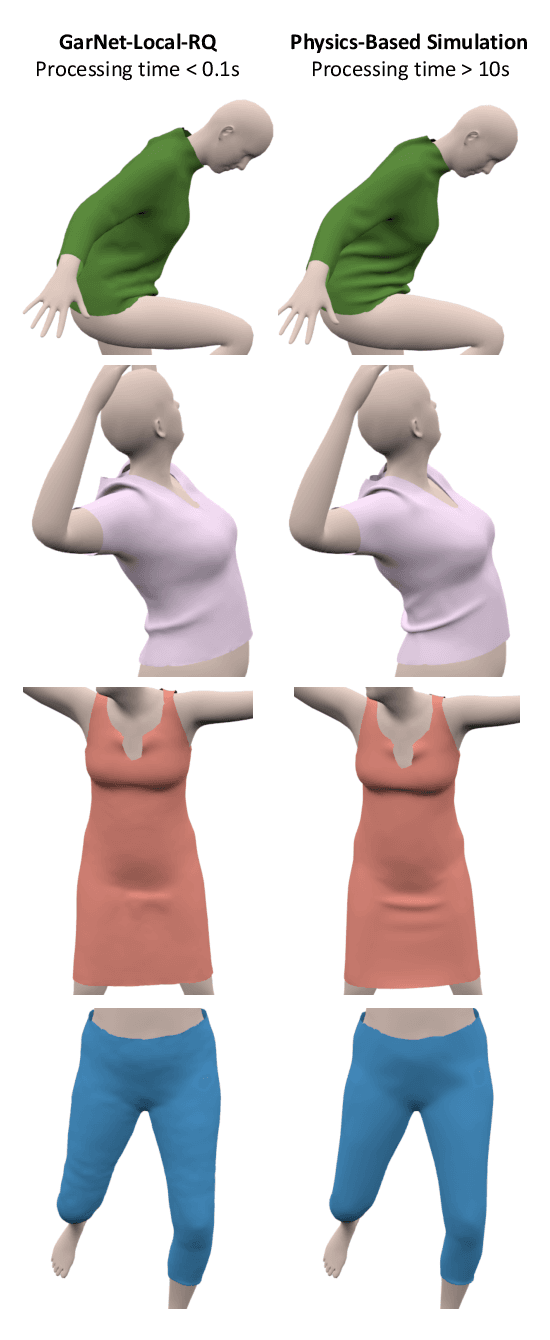

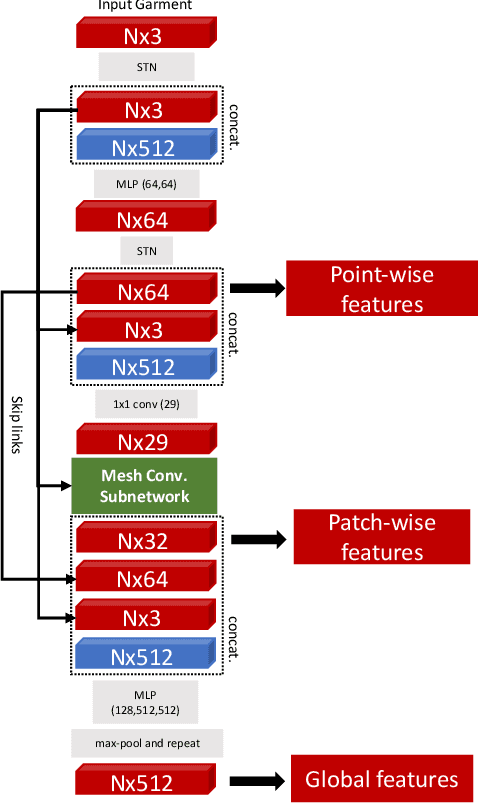

Abstract:In this paper, we tackle the problem of static 3D cloth draping on virtual human bodies. We introduce a two-stream deep network model that produces a visually plausible draping of a template cloth on virtual 3D bodies by extracting features from both the body and garment shapes. Our network learns to mimic a Physics-Based Simulation (PBS) method while requiring two orders of magnitude less computation time. To train the network, we introduce loss terms inspired by PBS to produce plausible results and make the model collision-aware. To increase the details of the draped garment, we introduce two loss functions that penalize the difference between the curvature of the predicted cloth and PBS. Particularly, we study the impact of mean curvature normal and a novel detail-preserving loss both qualitatively and quantitatively. Our new curvature loss computes the local covariance matrices of the 3D points, and compares the Rayleigh quotients of the prediction and PBS. This leads to more details while performing favorably or comparably against the loss that considers mean curvature normal vectors in the 3D triangulated meshes. We validate our framework on four garment types for various body shapes and poses. Finally, we achieve superior performance against a recently proposed data-driven method.
GarNet: A Two-stream Network for Fast and Accurate 3D Cloth Draping
Nov 27, 2018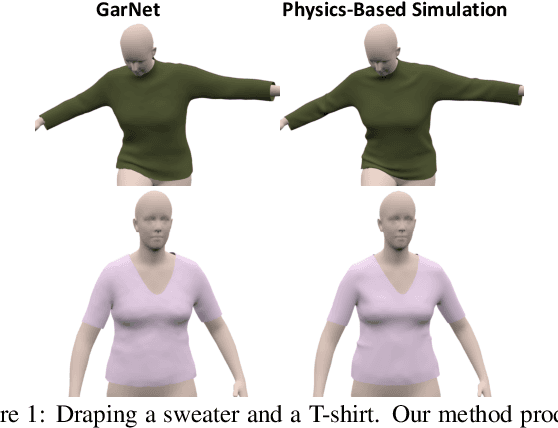
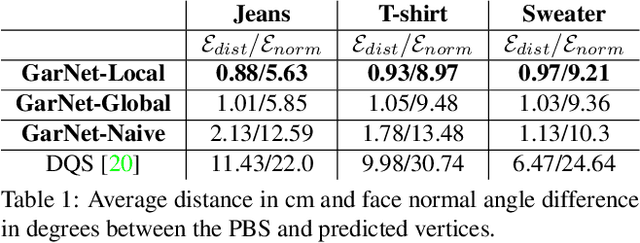

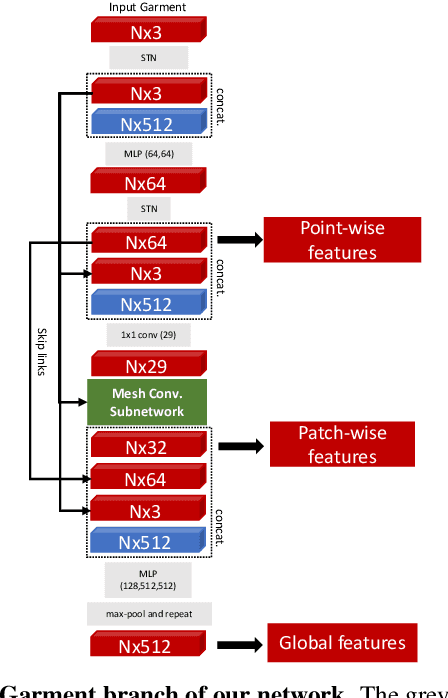
Abstract:While Physics-Based Simulation (PBS) can highly accurately drape a 3D garment model on a 3D body, it remains too costly for real-time applications, such as virtual try-on. By contrast, inference in a deep network, that is, a single forward pass, is typically quite fast. In this paper, we leverage this property and introduce a novel architecture to fit a 3D garment template to a 3D body model. Specifically, we build upon the recent progress in 3D point-cloud processing with deep networks to extract garment features at varying levels of detail, including point-wise, patch-wise and global features. We then fuse these features with those extracted in parallel from the 3D body, so as to model the cloth-body interactions. The resulting two-stream architecture is trained with a loss function inspired by physics-based modeling, and delivers realistic garment shapes whose 3D points are, on average, less than 1.5cm away from those of a PBS method, while running 40 times faster.
 Add to Chrome
Add to Chrome Add to Firefox
Add to Firefox Add to Edge
Add to Edge